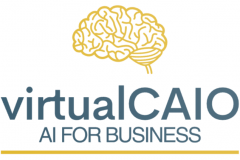The intersection of voice-to-text technology and Large Language Models (LLMs), like Relevance.ai, is creating a seismic shift in the landscape of qualitative market research. Traditionally, qualitative research has been a labour-intensive task, fraught with the challenges of capturing, transcribing, and analyzing vast quantities of unstructured interview data. However, as businesses strive to understand the nuances of consumer behaviour and preferences, the integration of advanced voice-to-text systems and LLMs is set to revolutionize the field, unlocking efficiencies and insights that were previously unattainable. Indeed LLMs in qualitative market research could potentially drive up productivity in a sector where interview analysis is an expensive process.
Voice-to-Text Technology: Capturing the Nuances of Human Speech
The proliferation of voice-to-text technology has been a game-changer in how data from research panels is collected. With the ability to accurately transcribe human speech in real-time and identify and keep track of individual speakers, this technology ensures that every opinion, suggestion, and subtle variation in tone is captured with precision. This not only streamlines the process of data collection but also preserves the richness and authenticity of the respondents’ voices. When applied to focus groups, interviews, and other qualitative methodologies, voice-to-text systems enable researchers to gather verbal data with unprecedented ease and accuracy. Furthermore, AI-driven sentiment analysis can identify positive and negative emotions along the way
Large Language Models: From Data to Decisions
Large Language Models, such as Relevance.ai, represent the cutting edge of artificial intelligence in text analysis. These models have the capability to understand context, infer meaning, and uncover patterns within large sets of text data. By analyzing the transcriptions produced by voice-to-text systems, LLMs can quickly sift through the colloquialisms and intricacies of spoken language, transforming qualitative feedback into actionable insights.
The Synergy in Market Research
The synergy between voice-to-text systems and LLMs like Relevance.ai is particularly transformative for market research. This combination allows researchers to:
- Increase Efficiency: Automation of transcription and preliminary analysis cuts down on time and resources spent on data processing.
- Enhance Accuracy: The integration reduces human error in data transcription and ensures that the subtleties of human communication are not lost.
- Scale Up: Researchers can handle larger volumes of qualitative data, making it possible to conduct more extensive and robust studies.
- Gain Deeper Insights: With advanced analytics, LLMs can identify trends, sentiments, and themes that might elude even the most experienced human analysts.
- Drive Innovation: By quickly identifying consumer needs and gaps, companies can pivot and innovate with greater agility.
Case Studies and Applications
Businesses across various sectors are leveraging this technology to stay ahead of the curve. For instance, a consumer goods company might use voice-to-text and LLMs to analyze customer feedback from social media, call centers, and focus groups to guide product development. Meanwhile, a healthcare provider might utilize the technologies to interpret patient discussions and improve care services.
Conclusion
The integration of voice-to-text systems with Large Language Models like Relevance.ai is more than a mere enhancement to qualitative market research; it is a revolutionary step forward. LLMs in qualitative market research enable the efficient and accurate analysis of spoken data and this synergistic technology offers a deeper understanding of consumer behavior and provides a competitive edge to those who adopt it. As we continue to refine and develop these tools, the potential for new insights and innovations in market research is boundless, promising a future where businesses are more closely aligned with the needs and desires of their customers than ever before.
